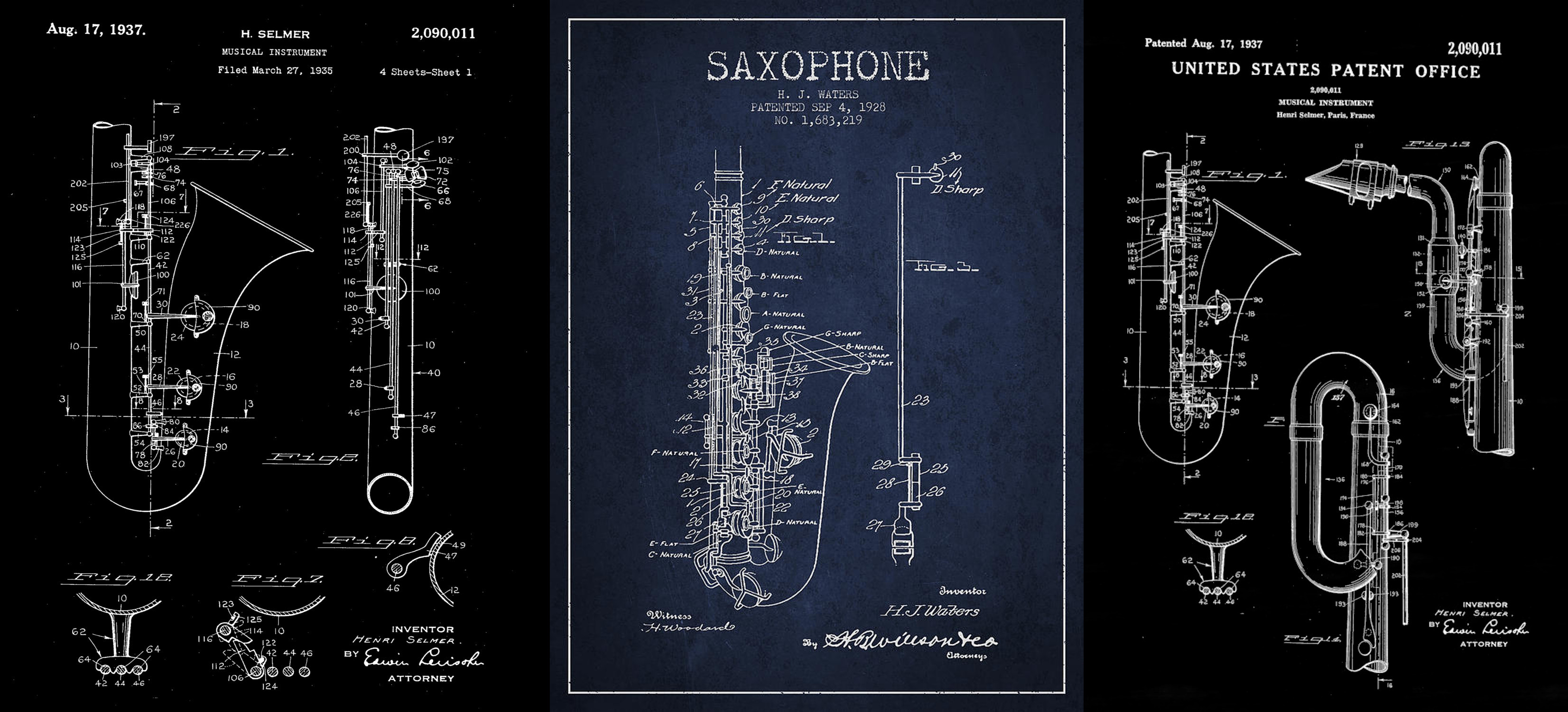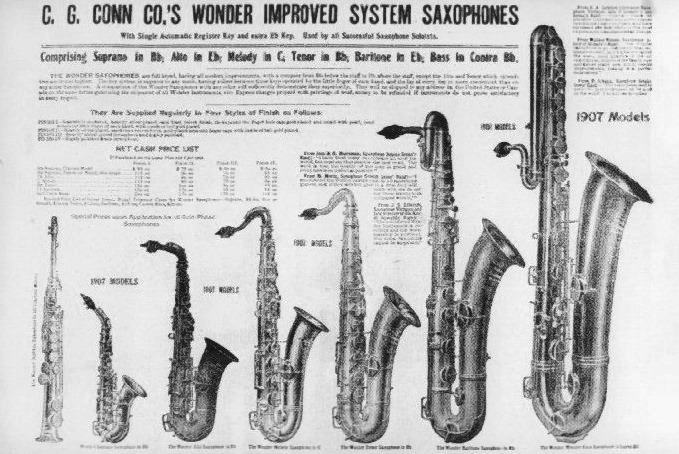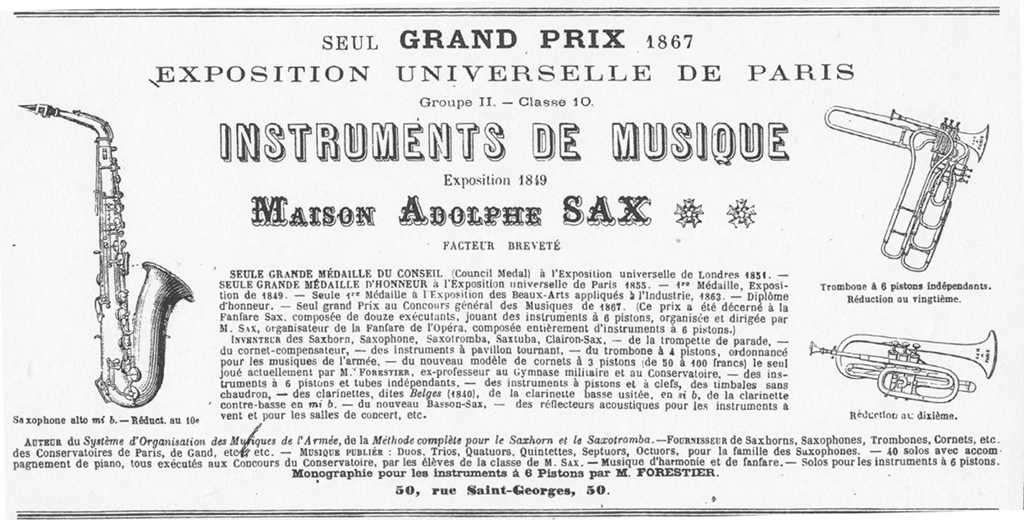So, You Want to Buy a Saxophone?

So, you want to buy a saxophone? What should you buy? And when?
This is a fairly frequent conversation I have with my students and their families after they’ve been renting an instrument for a while and it’s clear that their student is getting more and more committed to playing. So I’ve gathered all my notes on the topic and put them together here.
Note that this isn’t meant to be an exhaustive or objective guide. For non-musicians, such resources tend to lead to information overload and probably make decisions even harder. Here I try to distill my experience into concise advice.
The following is geared toward families with students in middle school or even early high school as this is when this topic usually comes up.
So, we begin with two questions you should ask yourself:
- What is your budget?
- How long do you think you’ll continue to play?
With those answers in mind, let’s get a lay of the land.
Major Pro Brands





Selmer, Yamaha, Jupiter, Keilwerth, and Yanagisawa are the established brands that have been around for decades. These all have a bit of a brand-name premium to them since they’ve all been around for a while, but they do have an established minimum level of quality you can depend on. You have to make sure you get a great one (sound as well as condition) to ensure reselling. As is understandable when you are spending this much money, people are very picky when they buy pro level horns.
Up-And-Coming/Boutique Pro Brands



P.Mauriat, Eastman, Cannonball, Diplomatte (not to be confused with “Diplomat” U.S.A, which is a vintage intermediate horn made by CG Conn) are some newer and less known brands. Not only have I seen these in the wild being played by musicians whose opinions I trust, but I’ve tried at least one of every brand and they’ve all been pretty good.
I’ve not played that many of them however and they are definitely in the minority, but if they offer you a pro level horn at a slightly less premium price, then they are definitely worth looking into. I would strongly suggest though, more so then with the major brands, that a professional play the specific horn to check it for oddities.
Vintage Horns

Vintage horns are a whole other animal. You have value not only assessed by the current performance of the horn (metal/mechanism condition, sound characteristics, lacquer, etc.), but also the collectors value as well. People will definitely try to sell vintage horns on name/collectors value alone, but the horn could be a piece of junk when you actually go to play it.
The most popular example is the Selmer Mark VI. It’s the Ford Mustang of the saxophone world; everyone wants one so they are super expensive. They can go from $3.5k (a re-lacquered alto) to $12k (factory gold-plated tenor) depending on a whole lot of factors, and that doesn’t even include the performance value which can make the horn a catch, or not even worth the money.
Student Models
For the major pro brands, their respective student models can be $200 (heavily used, perhaps marching band only use) to between $600 and $1k (lightly used, great condition, but still just a student model) to $1k - $2k range (brand new). For the specific boutique brands listed above, they may start about $300-$500 cheaper.
And be aware, there has been a recent phenomena in the last 10 years or so to watch out for. Lots of entrepreneurial types decide that they want to start their own saxophone line as a hobby or something. They all buy the same cheap parts from china and flood the market with these horrible horns that aren’t even worth consideration. They may start at $300-$500 for a brand new student model but don’t waste your time with them.
Now, it’s not to say that every Chinese manufactured instrument is de facto useless, as some of the more well known companies will manufacture specific parts for their student models in China to cut costs. But as a general guideline, and unless you get the opinion of a professional on that specific horn, stick only to the major or boutique brands I’ve listed above.
The thing with student models in general (for the above listed brands) is that they keep pretty well and you can easily resell them when you are done to someone else that needs a first-time horn for band or even an extra horn for marching as tends to happen for high school.
The Yamaha student model horns are the gold standard. They are very durable, the keywork is great, intonation fine, and while the sound is definitely lacking (got to cut costs somewhere), for student models, this is the least of your worries.
Jupiters also have good student models I’ve found. They tend to do better in the sound department then the Yamaha’s, but sometimes are weird with finger/mechanism layouts; there’s always trade-offs.
Intermediate Models
Intermediate models are a bit of an ugly duckling, because they are more expensive and sort of fit in between the “cheap and expendable” range and the “expensive professional” range. Frankly, other then a couple of mechanism changes (slightly better metals for more durability) I don’t think they actually offer that much better sound. Or at least, not for the price. Add about $500 - $1k to the student model prices above and you have the range for intermediate models. That puts the upper range at around $2k - $3k for brand new horns, and that is already in professional model starting range.
This makes intermediate horns a good target for people who want to keep playing, but perhaps not in a major/professional capacity. And this is a hard thing to assess after playing for about 2 or 3 years in middle school and wanting to upgrade from a student model horn, but only being in 8th or 9th grade and having no clue how serious one wants to pursue music.
Professional Models
As you would expect, these can get really expensive. $3k (non-major brands) - $10k (major brand + vintage). These horns are pretty durable, and have better metals for sound. But, the important thing to remember for pro horns is that unlike cars, they do differ a little bit horn to horn regarding sound and maybe intonation a little bit. So while you can buy any professional model from the major brands and be assured of a minimum amount of playability when it comes to mechanism, the feel of the keys, and intonation, for the amount of money you are putting out, you want to make sure that it sounds good too and doesn’t have any rare defects.
So again, you will need the opinion of a professional to play that actual horn, not just that model, before buying it. The differences in sound I’m describing are extremely subtle and non-musicians usually cannot discern the nuances; but I assure you they are there. It’s also quite possible that people will sell something for a certain price range just because of the name/model, but that the sound properties don’t quite warrant the price. So for pro horns, it’s important to get a pro player in there to asses the specific horn(s) in question. I was fortunate enough growing up to have teachers and musical mentors that offered to do this for me when purchasing horns and I’ve always told my students I’m happy to do the same for them when the time comes.
I do have to make a point about Yamahas here. And I’m very eagerly waiting for this trend to change because they are great horns when it comes to feel, quality, consistency, intonation etc. But frankly, the sound of these horns leave much to be desired, even for the pro models. Don’t get me wrong, I know plenty of people who play on them professionally and sound great. But what I’m talking about is what I notice in very focused back-to-back play testing with some other brands, they always seem to be lacking a certain depth to the sound. This doesn’t rule them out however, but I would be remiss if I didn’t mention it here.
Sound Potential
So believe it or not, at early stages of playing, the mouthpiece and reed combination have more to do with the overall sound then the horn itself. If your student picked up a professional model, you can hear a difference for sure, but if you are trying to get maximum sound potential out of a horn, you’re pretty much only going to be focused on the pro-range (despite advertising, intermediate range horns don’t really have that much better sound then student models in my experience), and that jumps up to big $ and also the need for third party assessments of the horn. So what is more important in the early stages than optimizing for sound in a saxophone, is optimizing sound through the mouthpiece and reed combinations first. Only after that, should you put energy into the saxophone itself (of course, considering it’s in good playing condition).
Playing Condition
A like-new student model for $500 is going to serve you better then a busted up pro model for $3k. In this early stage of the game, we’re working on finger technique, endurance, air, consistency, posture, comfort etc. The sound comes with experience over time, even with the same equipment. A go-cart will serve you better for learning the fundamentals of how to drive then a Ferrari with 4 flat tires. So for the first couple years of playing, you should optimize for instrument condition, not necessarily it’s model or brand.
Purchasing Online
You might be able to guess what I’m going to say here, but purchasing online is incredibly risky even if the seller supplies accurate information and abundant pictures. The only time I would recommend buying musical instruments online are if they are secondary student model horns for marching band or something and the quality isn’t critical.
There are some situations where a horn posted on Ebay or Craigslist is also available to be played in person or locally at a store somewhere nearby. These are the only situations where I went ahead with the student to pursue the instrument; because it turned into an in-person purchase!
I do know of some professionals who seek out rare and exotic instruments online only because they are already counting on repair/modification upon receipt and know what to look for in the pictures even if the description information is misleading or incomplete (and it usually is).
Rent-to-buy
Some music retail stores offer rent-to-buy programs that put a portion of your rental money toward a new version of the same model. This seems like a great deal. In practice however, these programs use the top brands which have very expensive student models. So when my students go to cash out their credit, they end up having something like a $1k difference between their credit (anywhere from $500 - $1k) and the target cost of a student model.
Well, at this point, my students’ families really start to assess whether sinking $1k into a student model is worth it (most of the time, it’s not). And the pretense of using that credit is kind of not what they expected.
The best strategy for rent-to-buy would be if your student starts very young (grades 3–5). You can rent-to-buy a new student model and get almost 5–10 years of quality use on the horn before considering the next move in high school, at which case, this horn becomes a trusted secondary instrument for traveling and marching use.
Buying Strategy
So depending on budget, and given all of the above, I usually recommend a couple of things:
If money is an issue, the best bang for buck is a like-new, or sightly used student model in great playing condition.
Not only will you be able to easily resell it when done or when you upgrade, but this also buys you time to assess how long music will be an interest to your student (in case things change in high school, which frequently happens) without breaking the bank.
Also, while most students take pretty good care of their instruments, you can’t always count on their peers to do the same while at school. So this also buys some time until they are a bit older and there’s less risk to the instrument at school/in transit etc.
If you go pro, go all the way to ensure great performance value, and easier resell.
If you do want to jump to pro, with the help of a professional opinion, make sure to get an outstanding horn or else reselling it might be a bit hard. If reselling it isn’t a concern, then with the name brands, you can be pretty confident in it’s ability to play well in general.
The non-main brand horns have a little more to prove, and unless it is a hands down great horn, I wouldn’t count on being able to resell it without a lot of effort, even to shops or other third parties.
There’s still plenty of bias against these newer brands with players in general (unless they’ve tried them themselves), so they won’t sell on brand or “professional status” alone. These horns move on playing merit alone and on an individual basis.
Don’t buy vintage.
Well, at least not yet. I mean you can, but it’s a very large risk and investment. And requires much more assessment on the front end of value and the condition. I know pretty well what to look for but still am weary of diving into vintage instruments without lots of research and opinions from technicians and other players.
Plus, like I mentioned above, your student might be very disciplined in maintenance and care, but their friends may not be. I barely trust modern professional models in middle school band rooms (and hot/cold weather transit situations) let alone vintage professional horns.
If you are unsure about the seriousness of your student, or, if your student is still very young but yet ready to upgrade to an intermediate or professional level saxophone, it won’t hurt them to wait and continue to use their student level horn.
This question comes up a lot and is a very important point to make clear. As long as the instrument is in good playing condition and doesn’t have any weird mechanism limitations (some student models have some weird key layouts; let a professional instruct you here on the specifics of your horn), then there is nothing holding back the student from progressing technically and in their tone on a student level instrument in good condition. You’re better off focusing on mouthpiece and reed combinations if you want to optimize in the early years.
To illustrate this point further, I could potentially pick up a student model instrument and play anything and everything I needed to without much technical obstruction. Other then the sound of the instrument, which will be an obvious change to me, it would only be very obscure and advanced corners of the saxophone technical world where I would find significant problems with a student horn (of course I notice the difference in the keywork, and while it’s not as nice as a pro horn, it doesn’t prevent me from doing anything however). I guarantee that your student will not be butting up against those issues in middle school or sometimes even in high school. Thus, if you’re not sure about your student’s seriousness, or if they start really early (3rd–5th grade), then there should be no rush to get away from a student model horn until you’re confident about the next purchase.

